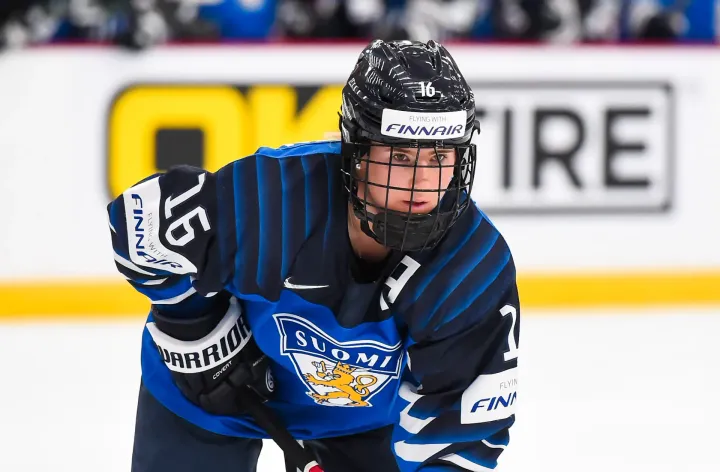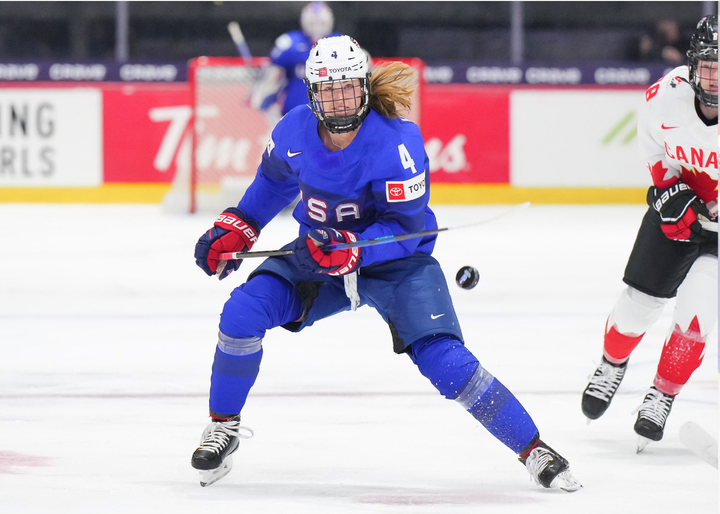Announcing The Ice Garden’s NCAA Fantasy Hockey League
Pucks, picks, and the best laid plans... it’s time for some fantasy hockey.
Welcome all to the Ice Garden’s 2018-19 NCAA Fantasy Hockey League! This is the league where you can win bragging rights (and zero, count ’em, zero dollars) by putting your lovingly cherished opinions to the test — the test of INDIFFERENT STATISTICS.
Summary
I don’t know how many of you will be interested in participating, so rather than a draft or an auction we’re going to organize this — for this initial year — on a salary cap basis. Every manager will have the same amount of fantasy dollars to hire their initial team, and different players will have different costs equal to their production last year. You’ll put together a team of 12 skaters and 3 goalies who will score points for each weekend’s games. The cost of each player as a new signing will vary from week to week; so will the amount the bank will give you for selling a player back.
You’ll have one trade a week, which must be executed between just-after-midnight Monday and just-before-midnight Thursday, in which you can sell a player back to the bank and buy a new player for your team. After each weekend, I’ll total up the points from that weekend and publish the standings, and you’ll have your chance to trade and improve your chances. There’ll be a Google Sheet where you can track how you’re doing, but every Tuesday there’ll also be an Ice Garden post noting who’s winning, notable movers, notable performers, and so on. Come join us, it’ll be fun!
How to Join
Email tigFantasyHockey@gmail.com to let me know you’re interested. Initial teams can be accepted at any time before THURSDAY SEPT. 28, as the first non-exhibition game will be Friday, Sept. 29. Now, let’s address the key concepts, including how to build your team and evaluate its performance.
- Team names can be set and changed at any time.
- Team names should include at least one (1) pun.
- If you want to give your manager name (real name, Ice Garden login name, Twitter handle, etc), that’s great but not required. If you don’t want me to publish a manager name, let me know./
How You Can Score Points
- Forwards score: Goals + Assists + Short-handed Goals + 0.1 * Blocks – 0.2 * Penalty Minutes.
- Defenders score: 1.5 * Goals + Assists + Short-handed Goals + 0.1 * Blocks – 0.1 * Penalty Minutes + 0.2 * plus/minus.
- Goalies score: 4 * Goals + 2 * Assists – 0.2* Penalty Minutes – 0.1 * Goals Against + 0.05 * Saves + 0.25 * Wins + 0.5 * Shut-outs./
What’s the data source?: http://www.hockeyeastonline.com/stats/filtersw19.php (This doesn’t yet exist as of Sept. 7, but I assume it will. If it’s necessary to change data source I’ll let everyone know. filtersw18.php and filtersw17.php are there, so filtersw19.php seems a safe assumption).
Building Your Team: Everyone will start with $600. Your team consists of twelve skaters and three goalies. The dollar cost for each player is equal to the number of points they earned last season. You can see that cost at this Google doc (plus the costs of various special cases, which we’ll go into below).
You can draft a player from any D1 program playing a D1 schedule. That means:
CHA: Lindenwood, Mercyhurst, Penn State, RIT, Robert Morris, Syracuse
ECAC: Brown, Clarkson, Colgate, Cornell, Dartmouth, Harvard, Princeton, Quinnipiac, RPI, St. Lawrence, Union, Yale
Hockey East: Boston College, Boston University, Connecticut, Holy Cross, Maine, Merrimack, New Hampshire, Northeastern, Providence, Vermont
WCHA: Bemidji, Minnesota, Minnesota-Duluth, Minnesota State, Ohio State, St. Cloud, Wisconsin
IMPORTANT: You can have no more than three players from any one school.
To “draft”, send me your team at tigFantasyHockey@gmail.com before midnight on THURSDAY SEPT. 28. I’ll check that the cost is less than $600 and there are no more than three players from any one school. If it’s not a valid team, I’ll email you; if I don’t hear back from you with a revised team before the deadline, I’ll accept the team but drop the lowest-cost players one at a time until both team validity conditions (cost and no more than three players from one school) are met.
The figure of $600 is chosen because it’s 15*40. 15 is the total number of players, and 40 is the number of points the 16th-best player scored last season. So you can pick a team with some superstars, but that’ll force you to be smart about who you take lower down the table.
If you spend less than $600, all dollars unspent are saved and can be used for trading later on. Speaking of which…
Trades
Every week, the cost of a player will be adjusted according to the following formula:
This week’s cost =
Points from last season MINUS
(Points-per-game from last season) * (games played this season) PLUS
Points from this season
If and when the number of games played this season reaches the number of games that player played last season, the first term stays at zero and the points are simply points from this season.
The cost of a goalie is adjusted the same way, except that the adjustment to last season’s points is (points per team game played last season) * (team games played this season).
Players will go up or down in cost depending on how they’re doing this season compared to last season. A player who’s doing better this season than last season will get more expensive as the season goes on. A player who’s doing worse will get cheaper as the season goes on.
The cost of a player in a given week is both the amount the bank will give you for that player, and the amount the bank will charge you for that player. The bank doesn’t care how much you paid for that player in the past. The bank only cares how much she’s worth right now.
You can pay for an acquisition with either: (A) dollars from a player that you sell to the bank and/or (B) dollars that you didn’t spend from the initial $600 (or that are left over from a previous sale and acquisition). In other words, dollars that you don’t spend immediately are saved. However, they don’t count towards your winning total — victory is determined by points alone.
If you try to make a trade you can’t afford, the trade won’t happen. If you try to make a trade that would leave you with more than three players from one school, the trade won’t happen.
Trades MUST be received on Monday, Tuesday, Wednesday, or Thursday. All trades will take effect Friday morning. So if you realize the Beanpot is coming up on Tuesday and you want to take advantage of the extra game for the Beanpot school players, you need to make that trade by the previous Thursday – doing it on Monday won’t count. (The reason for this rule is that if the scores are basically only updated once a week, it’ll be a lot easier for me to correct mistakes if they happen).
Points for Players Who Didn’t Play Last Year
I’ve pulled dollar costs for players who didn’t play last year literally OUT OF MY BRAIN. The costs will be adjusted for those players, per the formula above, as if they’d played 35 games last year. (Maximum games played, for a team that gets to the NCAA tournament final but is also taken to three games in its conference quarter-finals, is 42; minimum games played, for *koff*Brown*koff*, is 29). These costs are also given at this Google doc, but in summary:
- Returning USA or Canadian Olympians: 45, except Maddie Rooney is 40 because it’s hard for even an elite goalie to score as much as an elite skater. Barnes, Flanagan, Keller, Pannek, Clark.
- Returning players who were on the initial USA or Canadian National Team roster but didn’t get to the Olympics: 40. This is a brace of Potomaks, Annie Pankowski, and the often overlooked Micah Zandee-Hart.
- Other players who missed last year: There are two types of player in this category, TT Cianfarano and everyone else. Cianfarano, a Quinnipiac star and Clarkson transfer who was injured last year, was a 50-point player as a sophomore, a 26-point player on a stronger team as a junior. I’m starting her at 35, which may be a steal especially since she’s on Clarkson. Everyone else (e.g. Sammy Davis, a redshirt junior at BU) can be had for 15.
- Freshmen players who’ve been on the USA or Canadian U18 team: 25. There are a lot of these and history shows that the high flyers are phenomenal, but several will have difficulty adjusting to the speed of the college game. There’s a lot of risk to picking one at this price unless you know what you’re doing. Crazily, probably the two best U18s in the world, Katie Guay (Canada/Boston College) and Makenna Webster (USA/Wisconsin, and my nominee for most overlooked player in putting together the TIG 25 U25), don’t start college till next year. If we do this the same way next year, they’ll be priced at 25 and I would recommend not overlooking them under any circumstances. This year, the one who’s certainly underpriced is Sophie Shirley, who delayed going to Wisconsin by a year and in that season was casually brilliant in the CWHL, earning rookie of the year there. After facing Les Canadiennes, Bemidji will be a breeze.
- Alina Mueller: 25 points. It’s very hard to tell how this year’s second most newsworthy Mueller will do against a BC team that would probably have given any Olympic team in Pool B a hard time. But she’s clearly a unique talent in the Florence Schelling — Lara Stalder Swiss tradition of producing a worldbeater four years after the last worldbeater (like clockwork, ha ha!) and almost certainly worth a flutter at this rate.
- All other freshmen: 15 points. I may be overlooking someone, but it’s too late, I’m committed now./
- Holy Cross: Holy Cross are joining Hockey East! The plucky Worcestercestrians are going up against powerhouse BC, traditionally strong-in-goal trio of UConn, Merrimack, and Maine, sometimes-explosive BU, surprise conquerors of Minnesota Vermont, having-Alina-Mueller Northeastern (whose Aerin Frankel is, on her day, arguably the best goalie in Div 1), inconsistent but lethal Providence, and based-in-New-Hampshire UNH having had a strong record against DII and DIII competition in recent years. How to rank a team when you have no idea how many points they’re likely to get against a serious upgrade in opposition? What I’m going to do is simply start every player at a cost of 5 points (Brown, the worst team in DI, averaged 3(!) points per skater over the course of last season) and every goalie at 20. Honesty and http://www.hockeyeastonline.com/women/hc/stats18.php compel me to admit that Maeve Reilly and Julie Matthias may be steals at this price. Their three-goalie situation makes selecting any goalie a bit of a gamble at 20; rising sophomore Julie Pelletier looks to have the nod for starter on overall stats, but rising junior Marcia LaPlante had better stats in every category and seemed favored towards the end of the season./
I’ll be back with another article on hiring strategy; hope to see you then. Until then, all feedback through comments or by email to tigFantasyHockey@gmail.com is welcome. And if you’re reckless enough to do your hiring before that strategy article, fire me an email at that same address. I’ll check that mail at least once a day, so give me 24 hours before assuming I’ve forgotten you.
Let’s do that fantasy hockey! See you at the fantasy rink!





Comments ()